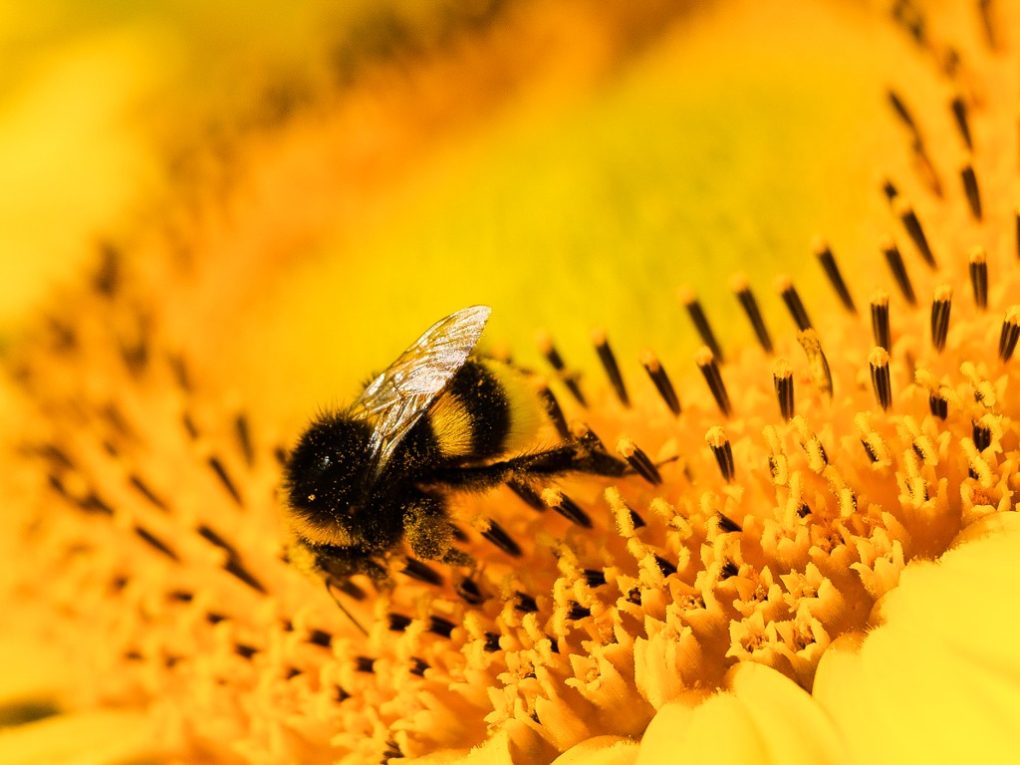Does Sunflower Face the Sun: What You Need to Know About Sunflowers and the Sun
Yes, sunflowers have a unique behavior of following the sun’s movement, a phenomenon called heliotropism. Before they start producing seeds, young sunflowers will follow the sun from east to west during the day, turning their heads to track the sun’s movement and maximize their exposure to sunlight. This behavior is known as solar tracking, and it’s thought to help sunflowers grow and mature more.
Table of Contents
Sunflowers and Heliotropism
Sunflowers have a behavior called heliotropism, which is the tendency to follow the sun’s movement throughout the day. This behavior is thought to be an adaptive mechanism that helps sunflowers optimize their exposure to sunlight, which they need for photosynthesis and growth.

Sunflowers can track the sun because of a specialized growth hormone called auxin that accumulates on the shaded side of the stem, causing it to grow faster and bend toward the sun. This allows the flower head to track the sun’s movement across the sky, maximizing its exposure to sunlight.
Tracking the sun’s movement also helps sunflowers maintain a cooler temperature by reducing their exposure to sunlight. When the flower head faces the sun, it can become quite hot, but by turning its face away from the sun during the hottest part of the day, the flower head can stay cooler and avoid overheating.
In addition to aiding in photosynthesis and regulating temperature, heliotropism may also attract pollinators to the sunflower. By facing the sun, the flower head is more visible to pollinators, making locating and pollinating the flowers easier.
Benefits of Heliotropism to Sunflowers
Increased Exposure to Sunlight
Increased exposure to sunlight is one of the main benefits of heliotropism, sunflowers’ ability to track the sun’s movement. By following the sun across the sky, sunflowers can maximize their exposure to sunlight, which is necessary for photosynthesis and growth.
Photosynthesis is the process by which plants convert sunlight, carbon dioxide, and water into energy and oxygen. Sunlight is a critical component of this process, and the more sunlight a plant receives, the more energy it can produce. The plant then uses this energy to grow and reproduce.
By tracking the sun, sunflowers can maximize their exposure to sunlight, leading to faster growth, increased yields, and improved photosynthesis. This can be especially important for sunflowers grown for food or oil, as increased sunlight exposure can lead to higher yields and improved quality.
In addition to promoting growth and productivity, increased exposure to sunlight can have other benefits for plants, including improved stress tolerance, stronger immune systems, and increased resistance to pests and diseases.

Improved Photosynthesis
Improved photosynthesis is another benefit of heliotropism, sunflowers’ ability to track the sun’s movement. Photosynthesis is the process by which plants use sunlight, carbon dioxide, and water to produce energy from carbohydrates and oxygen.
Sunflowers that track the sun can optimize their exposure to sunlight, leading to improved photosynthesis. When exposed to more sunlight, a plant can produce more energy through photosynthesis, promoting faster growth and improved productivity.
Improved photosynthesis can also lead to higher sunflowers grown for food or oil yields. More efficient photosynthesis means the plant can produce more biomass or oil per unit of sunlight received.
In addition, improved photosynthesis can have other benefits for plants, including increased stress tolerance, better immune function, and improved resistance to pests and diseases.
Temperature Regulation
According to Science Direct, temperature regulation is another benefit of heliotropism in sunflowers. By tracking the sun, sunflowers can maintain a cooler temperature by reducing their exposure to sunlight during the hottest part of the day.
When a sunflower faces the sun, the flower head can become hot, overheating and damaging the plant. By turning their face away from the sun during the hottest part of the day, sunflowers can stay cooler and avoid the negative effects of overheating.
This ability to regulate temperature can be especially important for sunflowers in hot climates, where high temperatures can be a major stressor for the plant. In addition, sunflowers can maintain a more stable internal temperature by reducing their exposure to sunlight during the hottest part of the day, improving their overall health and productivity.
In addition to regulating temperature, heliotropism may help sunflowers conserve water by reducing their exposure to sunlight during the hottest part of the day, which can help prevent excessive water loss through transpiration.
Pollinator Attraction
Pollinator attraction is another benefit of heliotropism in sunflowers. By tracking the sun, sunflowers can position their flower heads to face the sun’s direction, making them more visible to pollinators such as bees, butterflies, and other insects.

Pollinators are attracted to the bright yellow petals of sunflowers, and they are more likely to visit and pollinate flowers that are easily visible and accessible. When sunflowers track the sun, they can present their flower heads to maximize their visibility to pollinators, which can help increase the overall pollination rate.
Increased pollination can be especially important for sunflowers grown for food or oil, leading to higher yields and better-quality crops. In addition, increased pollination can also have broader benefits for the ecosystem, as it helps to support a diverse range of pollinators and promote the health of other plant species.
Seed Production
Seed production is another benefit of heliotropism in sunflowers. When sunflowers track the sun, they can position their flower heads to maximize their exposure to sunlight, which can help promote flower development and seed production.
Sunflower seeds are the primary product of sunflower plants and are used for various purposes, including food, oil, and bird seed. Sunflowers can produce more seeds per plant by maximizing their production through efficient flower development, increasing overall yields and profitability.
In addition, efficient seed production can benefit the ecosystem, allowing sunflowers to reproduce and support a diverse range of pollinators and other wildlife.
Drawback of Heliotropism
While heliotropism provides many benefits to sunflowers, there are also some potential drawbacks or cons associated with this behavior.
One main con of heliotropism is that it requires energy and resources for the plant to move its flower head to track the sun. This energy expenditure may be particularly high in large sunflowers with heavy flower heads and can lead to reduced overall growth and productivity in the plant.
Another potential con of heliotropism is that it can make sunflowers more susceptible to damage from strong winds or heavy rains. When sunflowers face the sun, their flower heads are exposed and vulnerable to damage from these environmental factors, which can cause the plant to lose its orientation or sustain other forms of damage.
In addition, heliotropism may also make sunflowers more vulnerable to pests and diseases, as the movement of the flower head may disrupt the plant’s natural defenses or create vulnerabilities that opportunistic organisms can exploit.
Impacts of Sunflower Orientation on the Environment
Habitat for Wildlife
Sunflowers are a valuable food source and habitat for various wildlife. As they grow and mature, sunflowers produce large, bright flowers attractive to bees, butterflies, and other pollinators. The flowers also produce seeds, a rich nutrient source for birds, squirrels, and other animals.
In addition to providing food, sunflowers can provide a habitat for various wildlife species. For example, the tall, sturdy stalks of mature sunflowers can provide bird shelter and nesting sites, while the dense vegetation at the base of the plants can provide hiding places for small mammals and insects.

Sunflowers can also help to support biodiversity by providing a diverse range of resources for wildlife. For example, different species of sunflowers produce different types of seeds, which can attract a variety of bird and mammal species. In addition, different varieties of sunflowers can bloom at different times of the year, providing a consistent source of food and habitat for wildlife throughout the growing season.
Soil Health
Sunflowers have several beneficial effects on soil health. Here are some ways sunflowers can improve soil health:
- Phytoremediation: Sunflowers are effective in removing contaminants from the soil through a process called phytoremediation. Sunflowers can extract heavy metals, toxins, and other pollutants from the soil, thereby reducing their concentration in the soil.
- Nutrient cycling: Sunflowers have deep root systems reaching up to six feet into the soil. As the plant grows, it takes nutrients from the soil and stores them in its leaves, stems, and seeds. When the plant dies and decomposes, these nutrients are returned to the soil, improving its fertility and nutrient content.
- Soil structure: Sunflowers help to improve soil structure by loosening compacted soil and increasing the amount of organic matter in the soil. This can improve water infiltration and retention and the growth of other plants in the area.
- Microbial activity: Sunflowers can also enhance microbial activity in the soil by promoting the growth of beneficial microorganisms. This can improve soil health and fertility by increasing nutrient availability and soil organic matter.
Microclimate
Sunflowers can also impact the microclimate of the area where they are grown. Here are some ways sunflowers can influence the microclimate:
- Temperature regulation: Sunflowers can provide shade and cooling effects in the area where they are grown, reducing the surrounding air and soil temperature. This can be particularly beneficial in urban areas, where temperatures can increase due to the heat island effect.
- Wind protection: The large leaves and stems of sunflowers can help to protect other plants in the area from wind damage. This can be particularly important in areas with high winds, such as coastal regions.
- Humidity regulation: Sunflowers can also help regulate humidity in the surrounding area by releasing moisture through transpiration. This can help to maintain a more stable and comfortable microclimate.
- Carbon sequestration: Sunflowers, like other plants, absorb carbon dioxide from the atmosphere through photosynthesis. This can help reduce the number of greenhouse gases in the air, which can positively impact the climate.
Erosion Control
Sunflowers can also be used for erosion control in areas prone to soil erosion. Here are some ways that sunflowers can help to control erosion:
- Soil stabilization: Sunflowers have deep root systems that can penetrate the soil and help to stabilize it, reducing the risk of erosion caused by water or wind.
- Water retention: The large leaves of sunflowers can intercept rainfall, reducing the impact of raindrops on the soil surface and allowing water to infiltrate more slowly. This can help to reduce erosion caused by water runoff.
- Nutrient retention: Sunflowers can also help to retain nutrients in the soil, reducing the risk of nutrient loss due to erosion. The deep root system of sunflowers can take up nutrients that might otherwise be lost through erosion and store them in the plant tissues.
- Weed suppression: Sunflowers can also help to suppress the growth of weeds, which can compete with other plants and contribute to soil erosion. The large leaves of sunflowers can shade out weeds, reducing their growth and allowing other plants to thrive.
